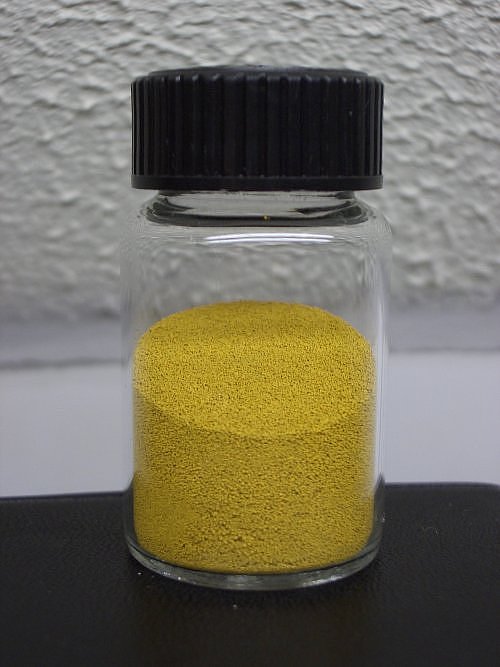One of the components of the Mendeleev periodic table in the form of grey particles is vanadium metal. Vanadium is very important to the aircraft industry because of its low density and tolerance to high temperatures and pressure. Vanadium and oxygen combine to form vanadium pentoxide (V2O5). Because it contains five units of oxygen for every one unit of vanadium, the pent in its name refers to this ratio. The electrical transitions between energy levels in outer orbitals give V2O5’s pure form a red hue.
An important industrial chemical renowned for its usage as a catalyst in both industrial and home settings is vanadium pentoxide (V2O5). Additionally, it is utilised to manufacture solar panels’ receptive material and the electrolyte in lithium-ion batteries.
The characteristics associated with vanadium pentoxide V2O5 assist decide if a chemical or material can be used for a certain application. For instance, certain characteristics are necessary for materials or substances to be used as electrolyte membranes, fuel cell cathodes, or battery anodes.
- Vanadium pentoxide for the production of batteries or fuel cells
Vanadium pentoxide V2O5 is produced with a number of impurities that enable it to be used in these many applications. For instance, the substance turns yellow-brown when modest amounts of phosphorus are introduced. It still contains vanadium pentoxide, which can help increase power storage, reduce corrosion by reacting with hydrogen gas released at the cathode surface during charge, and transport protons without posing any risk to people using them either internally or externally on their body. Because of all of these qualities, vanadium pentoxide can be used for applications that are necessary for batteries (though it is not used on its own since adding phosphorus makes it too solid).
- Vanadium pentoxide use in petroleum refining
Aqueous potassium carbamate (K2CO3) is used in the Benfield process, a solvent system, to absorb CO2 gas released by industrial processes. K2CO3 reacts slowly with CO2 gas and needs a catalyst to hasten the reaction. For that, organic catalysts are inexpensive and simple to make, but they frequently react with gaseous contaminants and are poisonous and corrosive. An excellent substitute are inorganic catalysts like V2O5. Because it inhibits corrosion and improves the breakdown of CO2 emissions, V2O5 is preferred.
- Vanadium pentoxide use in ammonia synthesis
In order to help separate hydrogen molecules into atoms, alloy membranes are made with vanadium. Iron and Cobalt create superior membranes with vanadium as opposed to chromium. In other words, these metals enhance vanadium’s hydrogen embrittlement. Vanadium is preferred because it is inexpensive and breaks down covalent connections between hydrogen atoms, increasing the yield of hydrogen atoms.
- Vanadium pentoxide use as vanadium-based SRC denitrification catalysts
Nitrogen oxides are transformed into water and nitrogen gas during denitrification. Ammonia (NH3) serves as a reducing agent in the selective catalytic reduction (SCR) reaction, which is the mechanism used in this procedure. A vanadium catalyst is used to speed up the conversion of nitrogen oxides to nitrogen and water. V-based SCR catalysts improve nitrogen oxide reduction at temperatures between 200 and 500 degrees Celsius. These catalysts can resist extremely high temperatures and have a low activation temperature.

